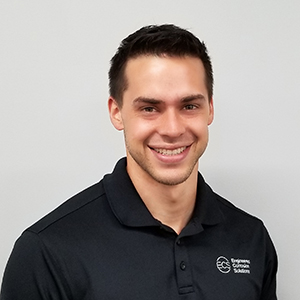Dry pipe and wet pipe fire suppression systems have one thing in common: corrosion. Any environment that presents steel, water, and oxygen together will undoubtedly result in oxygen corrosion. Dry pipe sprinkler systems experience oxygen corrosion in low points, typically in the system mains. The water is introduced there from code-mandated system testing or condensation from the air compressor. In a wet pipe sprinkler system, oxygen corrosion occurs in the high points where trapped oxygenated air accumulates.
Though dry and wet systems operate differently, a nitrogen fire suppression system effectively treats oxygen corrosion in both.
Implementing a Nitrogen Fire Suppression Dry System
Three key elements are needed when implementing nitrogen gas into a dry pipe fire sprinkler system: an FM-approved nitrogen generator, an integral venting device, and a method to facilitate oxygen removal from system piping.
1) FM-Approved Nitrogen Generator
A nitrogen generator is used to introduce a continuous nitrogen gas source at a purity of 98% or greater within the system. The total volume of all sprinkler systems (gallons or sq. ft.), single largest system volume (gallons or sq. ft.), and supervisory gas pressure must all be considered to select the correct size of nitrogen generator.
2) Integral Venting Device
The integral venting device facilitates the removal of oxygen from a dry pipe system. One vent is needed per system, which is installed at the riser.
3) Oxygen Purge Process
ECS uses a patented fill and purge process to remove the oxygen from the sprinkler system and replace it with nitrogen. The process takes two weeks regardless of the size or complexity of the dry pipe sprinkler system. A slow and controlled purge is introduced during the two weeks, and the pressure is set 3-5 psi below the air maintenance device setting to bleed out the air. The nitrogen generator can then fill the dry pipe system with 98%+ nitrogen and gradually dilute/remove oxygen from the piping. At the end of the two weeks, the dry pipe fire sprinkler system is comprised of 98%+ nitrogen gas, and the fill and purge process is complete.
Implementing a Nitrogen Fire Suppression Wet System
Like dry pipe nitrogen inerting (DPNI), three key elements are also needed when treating a wet system with nitrogen: a source of nitrogen gas (typically nitrogen cylinders), an oxygen removal vent, and a protocol to remove the oxygen.
1) Nitrogen Gas Source
Standard-sized nitrogen cylinders are typically used for small applications to maintain a wet sprinkler system purity of 98% nitrogen. If used in a large application such as a warehouse or distribution center, then a nitrogen generator can be paired with an air compressor and a nitrogen storage tank.
2) Oxygen Removal Vent
Much like the DPNI process, a venting device is necessary to remove the oxygen from the sprinkler system. This vent comes with two pieces: the ECS Protector Nitrogen Inerting Vent (PAV-WN) and a nitrogen injection port. Each system needs these components. The PAV-WN gets installed at a remotely accessible location, while the injection port is installed at the riser.
3) Oxygen Purge Process
To remove the oxygen from a wet pipe sprinkler system, the system must first be drained down completely until the system pressure gauge reads 0 psi. The system should then be closed and filled with nitrogen to 30 psi using the installed injection port. Once the system is at 30 psi, a handheld gas analyzer is used to take a purity reading at the purge vent. The system will likely be between 88%-92% nitrogen purity after the first fill/purge step. The process needs to be repeated three times or until 98% purity is achieved. Unlike the DPNI two-week fill and purge process, it takes less than a single day for wet pipe systems depending on the size. After achieving 98% purity, the system is ready to be placed back in service and the WPNI process is complete.
Effectively stop oxygen corrosion by adding nitrogen inerting equipment to your fire suppression system today. Contact our team of engineers and designers to determine the right specifications for your system.


